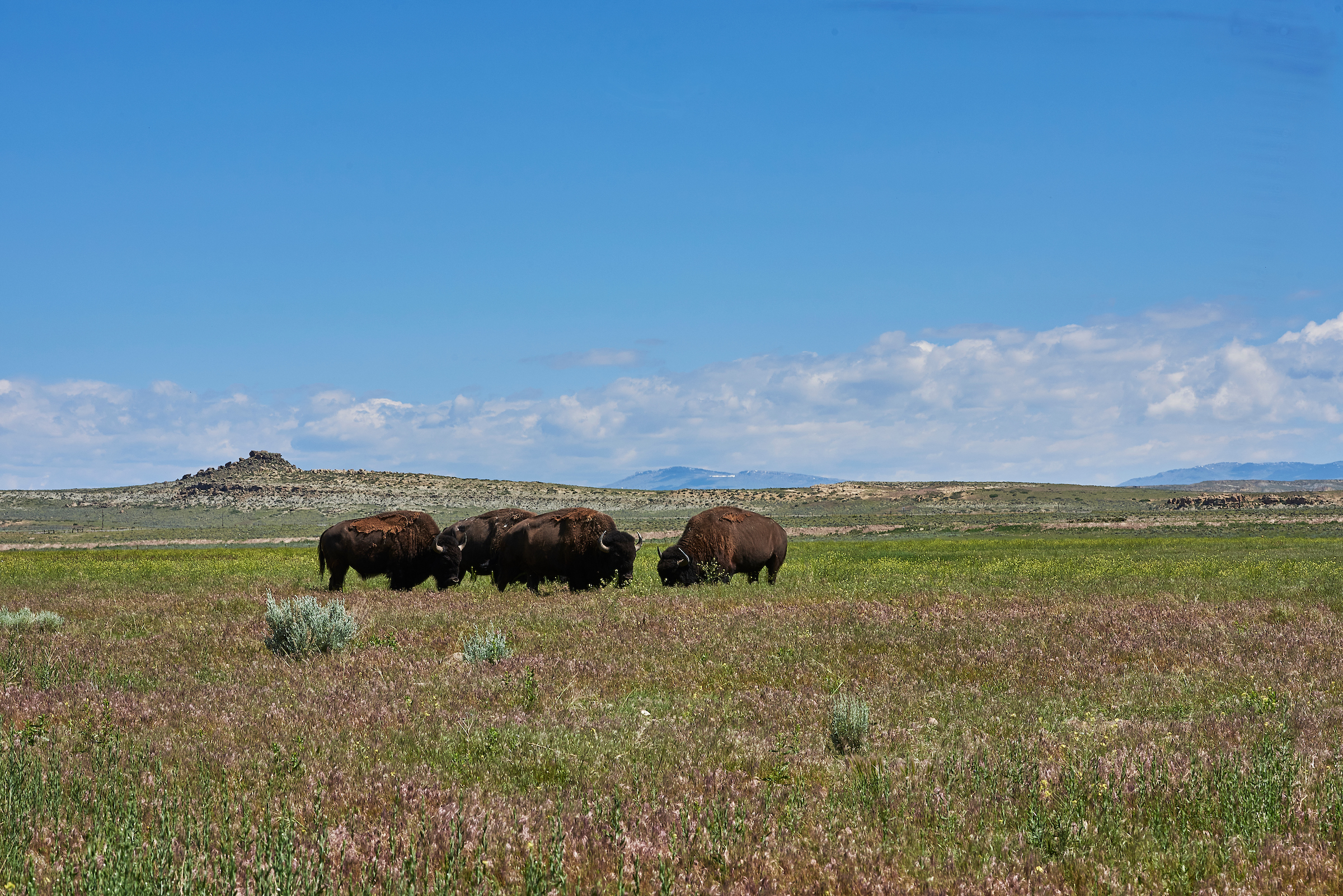BOZEMAN – The idea of reintroducing free-roaming bison herds to North America has been suggested in recent decades as a way to restore ecosystems. A new paleoenvironmental study by a Montana State University doctoral student concludes that reintroducing historic fire patterns is also needed to restore key processes that shaped North American ecosystems for millions of years.
The paper detailing those findings was published Nov. 17 in the journal Environmental Research Letters. Lead author John Wendt, who will graduate in December with a Ph.D. from the Department of Earth Sciences in the College of Letters and Science, said his study supported the assumption that bison and fire were historically important consumers of vegetation in much of North America, and that their respective importance depended upon moisture availability and vegetation structure.
“Our hypothesis was that the form of biomass consumption – by grazer or by fire – changed across the moisture and vegetation gradient so that bison dominated in drier, more open grasslands,” Wendt said. “As conditions became wetter, fire would become more dominant.”
Wendt said the hypothesis was based on observations by one of the paper’s co-authors, Gareth Hempson, in contemporary sub-Saharan Africa. Hempson observed that herbivores consume more biomass in drier regions and fire consumes more in wetter regions. Wendt wanted to investigate whether the same was true in the middle of the North American continent before the region was transformed by modern agricultural practices in recent centuries.
“We need to look to the past to understand North American ecology on these larger scales,”
Wendt said, noting that many contemporary North American ecosystems have been so substantially altered that it would be impossible to study ecological processes on a large scale the way it can still be done in Africa.
Wendt‘s study focused on two regions: the northern grasslands of Alberta, Saskatchewan, Montana, Wyoming, the Dakotas and Nebraska, and the grassland-forest transition region encompassing primarily Minnesota, Wisconsin, Iowa, Missouri and Illinois.
To reconstruct a 10,000-year history of moisture availability and fire activity in the two regions, he accessed online paleoenvironmental databases for lake sediment data that revealed when and how much pollen and charcoal were deposited in a given time period in different areas. That let him reconstruct past fire activity and past vegetation composition in those places, then compare that information with his previous study of 20,000 years of bison distribution abundance in North America, which was published in 2022 in the journal Quaternary Science Reviews.
In his recently published paper, Wendt explains that historical data showed bison were the primary biomass consumers in the drier northern grasslands, while fire played a greater role in biomass consumption in the wetter forest transition region. In dry regions, grasses were shorter and therefore easier for animals to access and digest than the tall grasses and woody plants found in wetter areas. Moreover, the activity of the large grazers kept fuel more dispersed in the grasslands, making it more difficult for fire to propagate there; in areas where bison weren’t as abundant, fuels for fire were more readily available.
Wendt believes these findings need to be considered in modern land management decisions.
“There’s a lot of emphasis on reintroducing bison or other large megafauna to restore some past ecosystem or to replicate the role of bison by rotating herds of cattle, for example,” Wendt said. “If you’re interested in restoring past ecological processes with your management – especially if you’re in a wetter or intermediate moisture zone – you must consider fire as well.”
Wendt added that the study found current biomass consumption in the United States is almost completely dominated by domestic livestock, including in wetter regions where fire was historically the primary biomass consumer.
“Ecosystems in these wetter regions evolved with fire but now are almost entirely grazed by livestock,” Wendt said. “Our results suggest that fire restoration is especially important for ecological restoration in these historically fire-dominated systems.”
David McWethy, associate professor of earth sciences and a co-author on the paper, said Wendt’s work is important not just for its conclusions but also for its novel methodology.
“Now we’re able to build a conceptual model and test these questions and datasets that John has brought together,” McWethy said. “It’s a very valid first effort at asking some of the big questions about the historical role of fire and bison on vast grasslands of North America.”
Wendt, originally from Colorado, said he chose MSU for graduate school for the chance to work in the Paleoecology Lab with McWethy and Regents Professor Cathy Whitlock.
“Both Dave and Cathy were doing really interesting work, and with Montana being such a grassland-dominated state, there were lots of opportunities to study what was going on in our region,” he said. “We’re among the best in the country at what we do.”
After graduation, Wendt will begin a post-doctoral fellowship at Oklahoma State University with another of the paper’s co-authors, Samuel Fuhlendorf, who specializes in grassland fire and herbivore ecology. Wendt ultimately hopes to continue researching historic ecology in an academic career.
“Understanding changes over time is important for understanding how restored ecosystems might look and function today,” he said.



